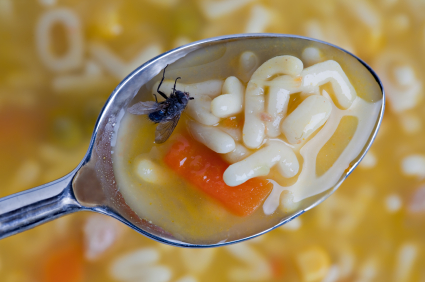Pest Control Houston TX – Fly Pest Control …
Fly control in Houston can be challenging as the source of the fly problem is often unclear.
So a question people often ask is, “ Where are all these flies coming from?”
The answer depends on the type of fly. Here are some of the common places where different kinds of flies breed…
Overripe fruits — Fruit Flies:
Fruit flies (“vinegar flies”) are strongly attracted to rotting or fermenting scents. Overripe or rotting fruits and vegetables, drain pans under refrigerators, gunky mops, and unrinsed recyclable bottles and cans are common breeding places.
Drains — Drain Flies:Drain flies lay their eggs on the insides of slimy floor and sink drains and in similar situations. The larvae spend their entire lives feeding on the gunk there.
Animal droppings — House Fly:
Pet poo – this is a common breeding place for filth flies (the house fly is one of these). Daily removal of pet droppings is key to eliminating or reducing and controlling house fly activity.
Damp soil — Fungus Gnats:
Fungus gnats breed in the damp soil of potted plants, and in any other soil that is high in organic material and constantly moist.
Earthworms — Cluster Fly:Cluster fly larvae feed inside the bodies of earthworms. If there are large populations of earthworms nearby (for instance, a nearby park with large lawns), cluster flies sometimes enter buildings in early fall looking for a place to overwinter.
Dead animal carcasses — Blow Flies:
Blow flies are attracted to dead bodies and are a common breeding place for these and certain other flies.
Garbage – Various Fly Species:Dumpsters, garbage cans, and trash compactors—Many kinds of flies breed in damp garbage (tight-fitting lids and at least weekly removal are key), as well as the crud that can accumulate in the bottom of these containers.
What’s the solution for fly control in Houston?
The first stepin effective fly control is to identifythe kind of fly species you have a problem with. This will provide clues on where to look for the source of the fly breeding grounds.
Sanitationis critical in reducing and removing prime breeding sites.
Keeping flies out with screening, weatherstripping, caulking and other exclusiontechniques is important for long term fly management and control.
In commercial settings especially in food handling establishments, additional measures must often be implemented. This may include using fly light traps, air doors, and insecticide applications.
No single technique will control all fly infestations.Good, effective fly management often requires an integrated approachof correct fly identification, inspecting for breeding sites and entry points, and sanitation and exclusion measures. And the judicious use of focused pesticide applications.
If you need help with pest control Houston
fly problems or any Houston pest control
problem, we can help. Phone us today at 281-370-4772 or 281-440-5355.Or fill in the Free Quick Quote form above.












